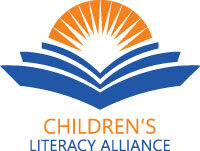Literacy consists of the ability to understand spoken and written communication, and to speak and write so that one can be understood by others.
While academics may claim that literacy involves reading and writing, this ignores the most fundamental aspect of literacy: the ability to communicate in spoken language.
Many literacy programs focus on rote memorization, correct pronunciation, and grammar rules. These programs have limited success rates as they fail to address the underlying issues in literacy.
To lay the foundations of literacy, we must focus on understanding. If the foundations of language and literacy are understood, the rest will follow.
What is the foundation of literacy?
Certain words of the English language are often referred to as connection words. These are small words like at, and, to, in, and so on. They are also sometimes referred to as transition words, linking words, or connectives.
These “connection words” are the most complex aspect of literacy. They are what all literacy rests upon.
Connection words are the small, simple words that create logical relationships between ideas, sentences, or paragraphs in speech and writing. They help guide the reader or listener.
The English language contains roughly 600,000 words, but fewer than 100 simple words form the core of the English language. Approximately 50% of the average English sentence consists of these 100 words.
A person’s literacy level can be predicted by his understanding of these “simple words.” (This may sound unbelievable, but by actual test, understanding these words is the key to unlocking literacy and academic success.)
Connection words act like bridges. They link thoughts. Their functions include:
- Showing relationships, such as cause and effect, comparison, contrast, and sequence.
- Organizing ideas to improve comprehension and structure.
- Improving fluency in reading and writing by making words and ideas flow.
Mastering connection words is part of literacy. It affects writing skills, reading comprehension, and critical thinking, as these words help express and interpret ideas logically.
These “simple” words are intimately connected with grammar. If they are not understood, learning grammar becomes nearly impossible.
In the mid-20th century, there was a dramatic decrease in the teaching of these vital words. We have since seen a catastrophic drop in literacy rates. Over a third of the US population is now functionally illiterate (more than 120 million Americans).
